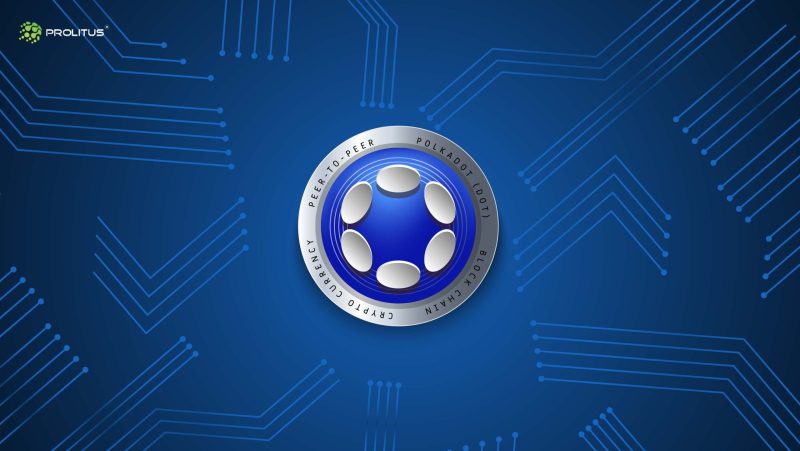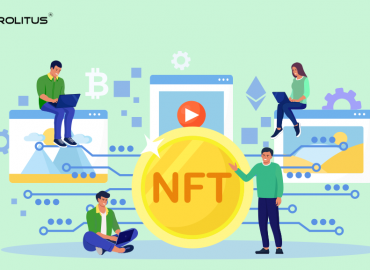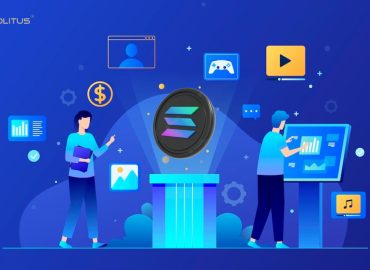NFTs are one of the fastest-growing blockchain technologies in the entire crypto ecosystem. The strong backing of blockchain networks like Ethereum, Solana, Polkadot, Avalanche, Cardano, and many more is also helping it grow leaps and bounds. But one of the significant concerns with NFTs is interoperability.
It is a very well-known fact that NFTs which are interoperable have a higher value and potential. The main reason for this is the ability to move from one marketplace to another. But currently, one of the biggest hurdles of NFTs is the lack of interoperability between marketplaces. And there comes Polkadot to solve this issue.
Thus in this piece of article, we will be covering each and everything around the NFT marketplace and its development using Polkadot. So let’s get started.
What is an NFT Marketplace?
NFT Marketplace is a decentralized platform which acts as a channel of communication between the NFT buyers and sellers. Using these marketplaces, it is possible to trade in digital assets like music, art, tweets, video clips, memes, in-game wearables, and much more. It is even possible to mint NFTs in the marketplace, which can be further traded in the same marketplace or transferred to another marketplace for trading.
Generally, most of the NFT marketplace supports cryptocurrencies in order to make trades, but some of them even support fiat and debit/credit cards. There are mainly two types of NFT marketplace:
- Horizontal NFT Marketplace
This kind of marketplace focuses on a generic audience and thus allows the trading of various kinds of digital assets. Some of the most prominent examples of horizontal NFT marketplace include OpenSea, Solsea, Rarible, etc.
- Verticle NFT Marketplace
This kind of marketplace focuses on a niche audience and thus allows the trading of only specific kinds of digital assets. Some of the most prominent examples of verticle NFT marketplace include Decentraland, Jump.trade, SuperRare, etc.
What is the Polkadot Network?
Polkadot is a decentralized multi-chain network that aims to connect various blockchains into a single, cohesive network. With the help of this mechanism in place, Polkadot enables the exchange of any kind of asset or data.
Polkadot also attempts to overcome the security and scalability vulnerabilities that existing incompatible blockchains possess. Along with that, Polkadot uses parallel blockchains, sometimes known as parachains, to maintain scalability and speed, in addition to cross-blockchain transfers.
Finally, Polkadot also solves the issue of NFTs using a lot of energy with the help of the next-generation nominated proof-of-stake (NPoS) model. NPoS helps Polkadot overcome high energy requirements for NFT creation. Thus with these advantages and its unique features, which we will cover in the next section, Polkadot is acting as a centre point of attraction in the NFT marketplace.
Why should you consider Polkadot for the development of the NFT Marketplace?
There are various features that make Polkadot stand out from other blockchain networks. But in this section, we will cover some of the unique features provided by Polkadot. So let’s go through them one by one.
1) Community-driven governance and High transparency
Polkadot allows stakeholders to give their inputs and suggestions regarding the upgrades and essential decisions for the marketplace. Thus the governance is community driven and highly transparent.
2) High-end security
The distinctive data validity and data accessibility methods employed by Polkadot allows meaningful chain interaction. As a result, the chains are separate but still linked with each other in terms of security.
3) Highly scalable
In order to confirm and secure numerous blockchains, Polkadot uses a common pool of validators, enabling unparalleled economic scalability. In addition to that, Polkadot also offers transactional scalability by distributing transactions among these parallel blockchains.
4) Truly interoperable
The true power of Polkadot lies in its ability to support interoperability. Users can transfer any type of data or resource between chains with the help of parachains employed by Polkadot.
5) Highly customizable
Polkadot, with the help of a substrate framework, makes it possible to create a customized blockchain in a fraction of seconds. Along with that, by just connecting your customized chain to the network, you can enjoy all the underlying features of the Polkadot network.
Step-by-step guide for creating an NFT Marketplace on Polkadot
The development of the NFT marketplace on Polkadot is a lengthy process. You will initially need to set up a virtual server to store all your NFT marketplace data. And after that, you will also need to configure all the network setups like domain name, SSL certificate, firewall, and other necessary requirements.
This is just the beginning, and if you aren’t from a technical background, then you might find it hard to do. Along with that, there are also particular prerequisites that needs to be taken care of like:
- Git
- Chrome Browser
- Ubuntu 20.4 or 18.04
- Docker CE 20.10 or above
- Docker compose 1.25 or above
Now let’s go through the steps that you will need to follow to develop an NFT marketplace on Polkadot:
Step 1: Install the polkadot.js extension
Step 2: Complete the setup of the polkadot.js extension and create an admin address
Step 3: Get some DOT, a Polkadot native coin
Step 4: Deploy the smart contract to manage the NFT marketplace
Step 5: Clone the NFT marketplace code from the Github
Step 6: Configure the backend of the marketplace using the matcher contract address, seed, and administrator
Step 7: Configure the frontend of the marketplace using the administrator and matcher contract address
Step 8: Build and test the marketplace
Step 9: Launch the marketplace
How can Prolitus help you with NFT Marketplace development?
We at Prolitus are a leading blockchain development company in the crypto ecosystem. We have a team that comes with high-end experience and expertise in the field of developing a whitelabel multi-chain NFT marketplace. Our highly skilled blockchain developers can also help you design and align the NFT marketplace based on your business objectives.
Still thinking about what to do?
Just contact us, and let our experts handle all your doubts.
Conclusion
As time passes by, the development around blockchain technology is going to be more assertive. Thus, there is no doubt in saying that NFTs are not just a short-term trend. Instead, they will see much greater adoption and demand as the underlying technology is improved. So it’s high time to grab this golden opportunity and build an NFT marketplace.
If you want a fully decentralized cross-chain NFT marketplace, then the best option is Polkadot. With various advantages and unique features, Polkadot is the best blockchain to build the NFT marketplace. So don’t wait much longer, contact Prolitus, and our experts will guide you with the best advice and business opportunities.
FAQs
Below are the most frequently asked questions regarding the Polkadot NFT marketplace. So let’s go through them.
Q1) What is the cost of developing an NFT Marketplace on Polkadot?
Answer: The cost of developing an NFT marketplace on Polkadot varies based on two main factors, i.e. business requirements and the complexity of the NFT project. Thus, to get an estimate regarding the cost of development, you can contact an NFT development company like Prolitus.
Q2) Which are the famous NFT Projects built on Polkadot?
Answer: There are various projects built on Polkadot, but some of the most prominent ones include:
- Efinity
- Skybreach
- Kanarias
- RMRK
- Unique Network
Q3) What is the Polkadot NFT marketplace?
Answer: Polkadot NFT marketplace is a decentralized platform that acts as a common point of interaction for NFT buyers and sellers. With its unique features, Polkadot makes trading of digital assets very easy.





